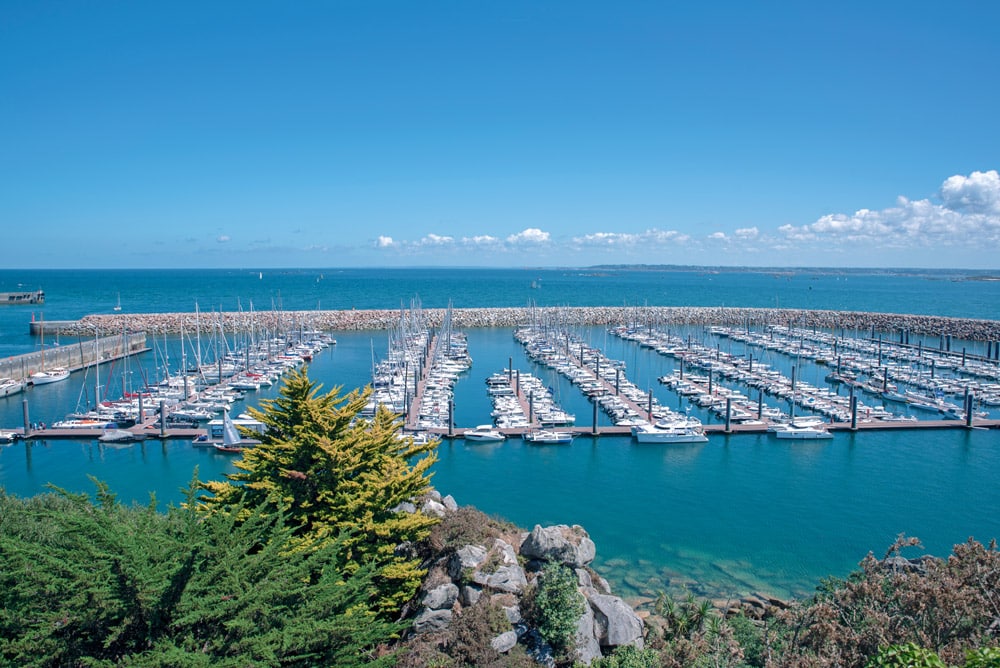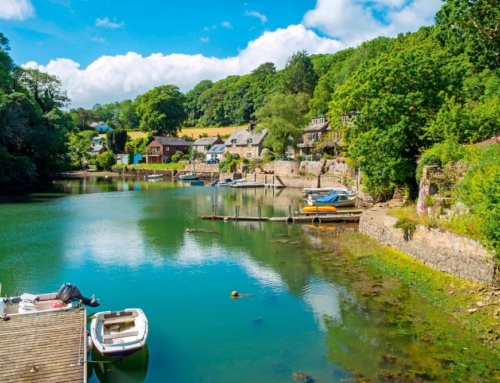Mark Featherstone and Jo Moon set a course for Roscoff. Found hugging Brittany’s rugged shores, this popular ‘port of entry’ located in the Bay of Morlaix offers a multitude of voyaging opportunities and delightful discoveries along its beautiful Atlantic seaboard.
I will never forget my first sight of Roscoff as a landlocked teenager on board the infamous training ship Provident, having sailed on a brisk beam reach all the way from Salcombe to France. The distinctive Renaissance bell tower of the granite church was the first thing that hove into view, and I remember watching it come closer as more of the town beneath it was revealed. The old harbour was bustling with activity: fishermen preparing their nets, and beyond, quaint houses adding to this charming scene. Since that voyage to my first of many ‘ports of call’, Jo and I have crossed La Manche to Roscoff numerous times, particularly since the UK left Europe and clearing in became a tiresome but necessary part of the boating abroad experience.
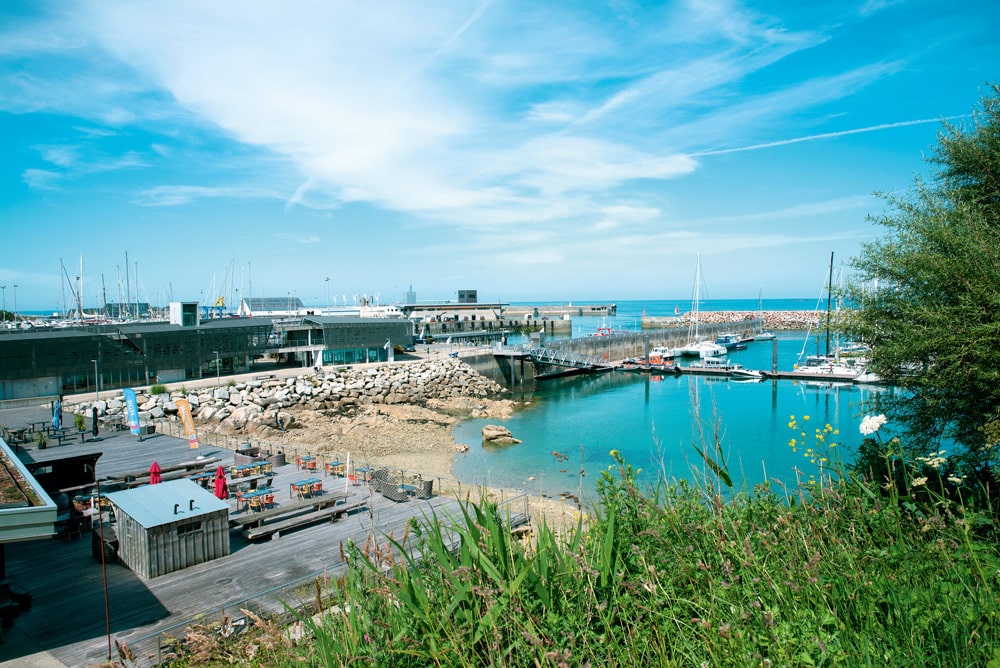
The decking is perfect for al fresco meals overlooking the marina. © Izeran Photographies
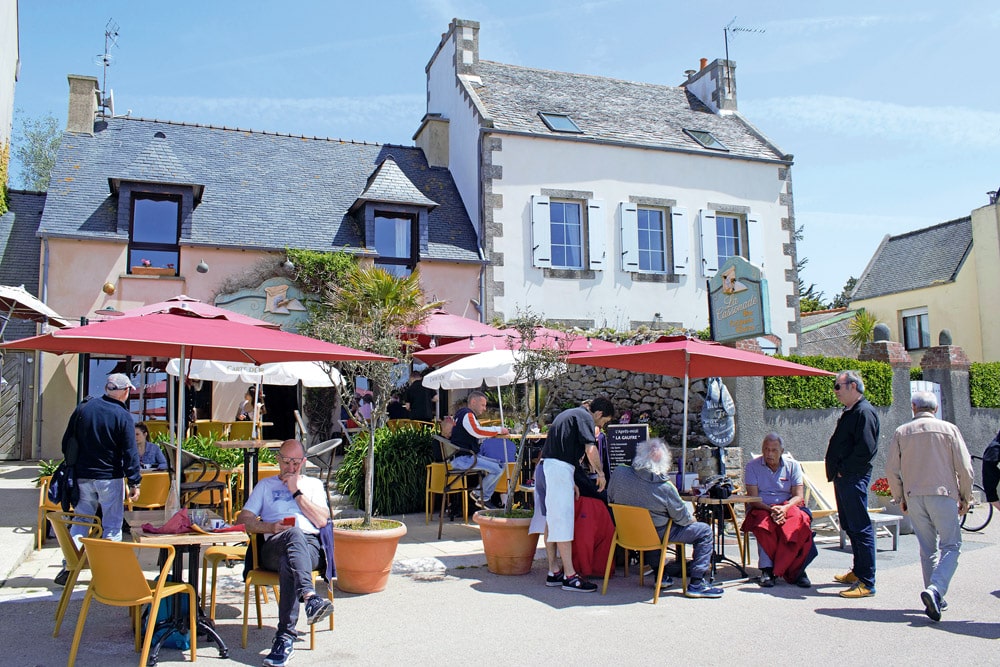
Lots of cafes on Isle de Batz
A bounteous coast
A popular ferry port for Brittany Ferries, most holidaymakers disembark bleary-eyed from a six-hour ferry crossing to pound down the autoroute for hundreds of kilometres to find sun, sand and the French experience. Yet Roscoff has all that to offer, and much more, for the discerning Francophile, and it has one of France’s very finest marinas. Not only is the port a destination in its own right but it is the most westerly ‘port of entry’ on the Atlantic coast, and as such, it is the gateway to Europe and ultimately the Mediterranean. From Roscoff you can easily explore the pretty harbours and inlets on this stunning coastline, or cross the Bay of Biscay to cruise down to Gibraltar and head even further east to warmer waters.
Roscoff also has a distinct advantage as a port of entry because it has a fully staffed Customs and immigration facility in place to process ferry passengers. This means no waiting about to get an appointment to clear in. Located in the Brittany Ferries terminal, we have always found the officials and staff here to be exceptionally welcoming.
Trailering
Brittany Ferries sails from Plymouth to Roscoff from March to November.
They accept trailers up to 9m in length (including hitch) and 4m high.
There is a superb slipway that can handle multiple launches at any one time, plus a large trailer park.
Lift-out facilities are suitable for boats up to 6m.
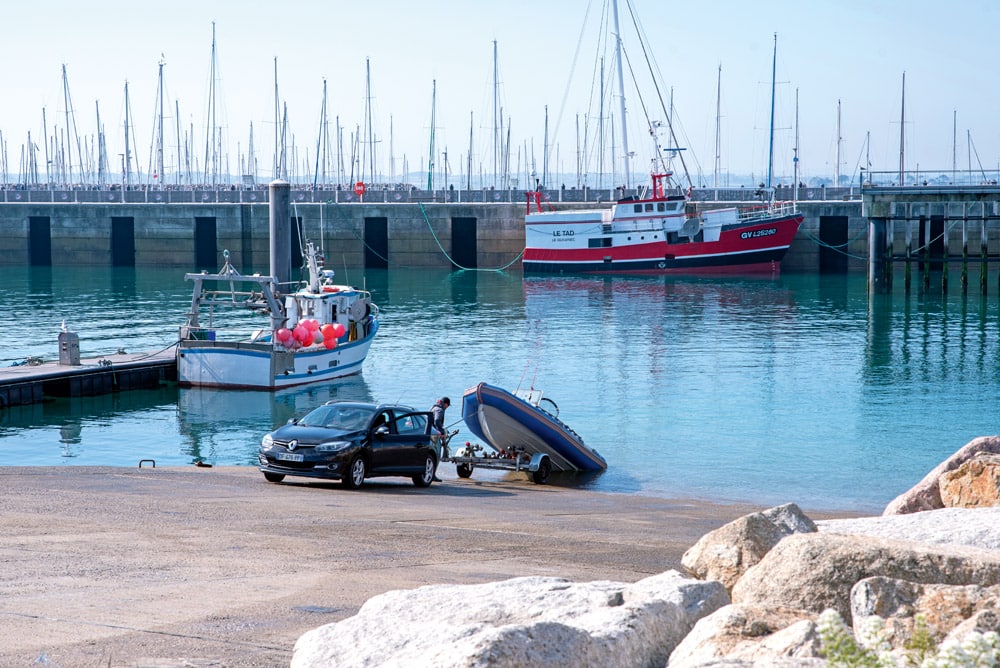
The wide slipway makes for easy launching.
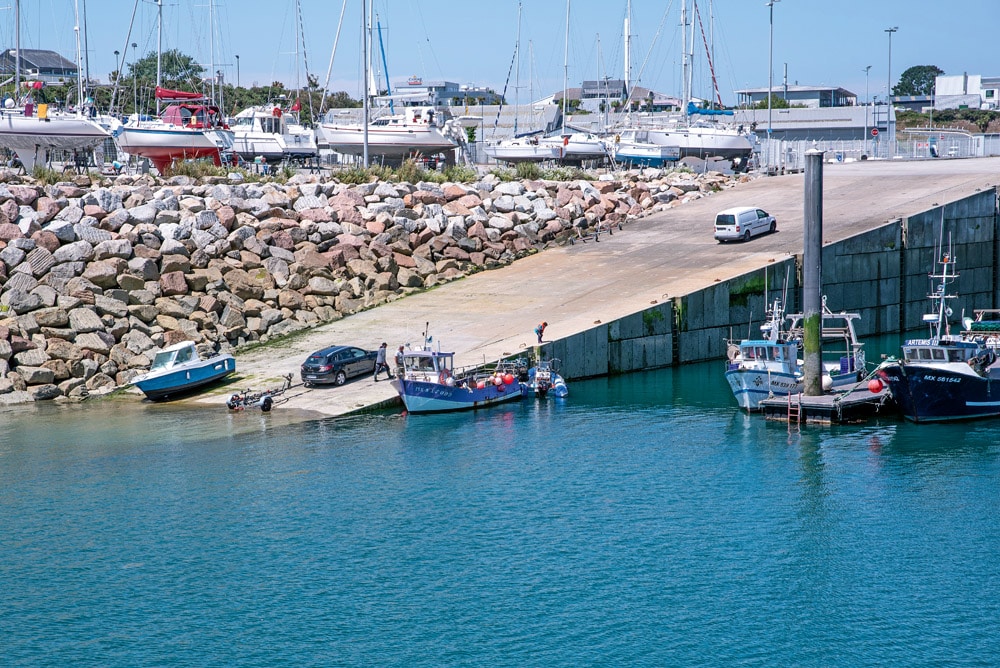
Steady as she goes
The main harbour in Roscoff dries out, so we recommend using Port du Bloscon-Roscoff Marina, which is super-easy as it’s accessible at all states of the tide. I strongly advise too that any approach to the marina is made from the north only, whereupon you’ll pick up the port and starboard buoys that clearly define the deep-water channel. Pay attention, though, to the myriad of cardinal marks and stay in this deep-water channel leading directly to the outer ferry harbour wall. Keep a good look out for ferries and do not enter or exit if the red light is showing on the outer harbour wall. Once around the outer wall, Roscoff Marina will come into view on your port side. And finally, always take into account tidal flows, which can run up to as much as 5 knots in and around the marina on spring tides.
A modern facility
Port du Bloscon-Roscoff Marina opened in 2012 after a 52-million-euro investment and is perfectly located on the north coast of Brittany, 75nm from Guernsey and 95nm from Plymouth, making it a top cruising destination from southern UK. With 625 berths, 24-hour fuel and access at all states of the tide, this is a reliable and hospitable port.
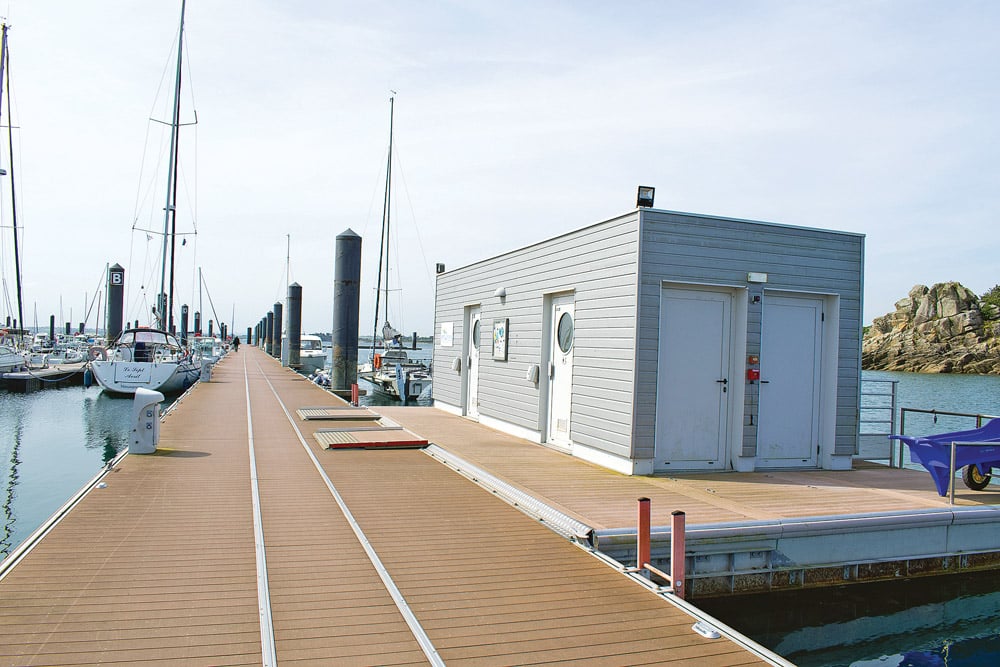
The wide pontoons even have their own toilet blocks!
Canadian-born harbour assistant Antoine will likely be the first to welcome you from behind the wheel of his launch and then guide you to the deep-water haven to moor your vessel – as we discovered. Upon settling into your surroundings, you’ll find there’s nothing laissez-faire about this marina. Port du Bloscon Marina’s contemporary design, wide pontoons and large decked al fresco dining area are extremely well thought out and benefit too from a well-stocked chandlery, a fishing tackle shop and two outlets for electric bike hire.
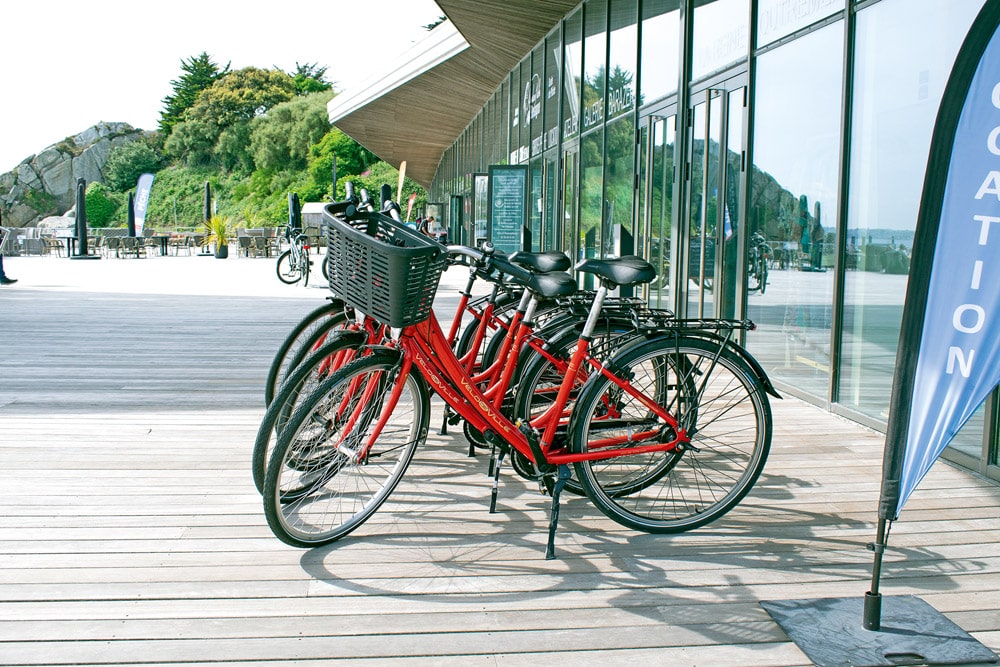
Electric bike hire shops on the quay.
The brand-new marina website allows visiting boats to register their arrival time, and although visitor berths are on a first-come-first-served basis, sub-12m boats will normally be able to find accommodation without an issue. The usual toilet and shower facilities are clean and plentiful. There’s a laundry and free Wi-Fi too, and the wide pontoons all have electricity and drinking water supplies. You’ll generally find a willing member of the marina staff on hand to guide you in or take a line from you in season, including on a busy bank holiday. Even in the quieter months, the staff are out on the pontoons daily between 9am and 6pm.
Around half of the berth holders in the marina are from the UK, which goes to show not only that berthing fees are often cheaper in Europe, but also just how popular this part of the French coast truly is. Indeed, there really is a huge amount to explore in the Bay of Morlaix, and although there’s a waiting list for berths in Bloscon Marina itself, having a base there would be particularly advantageous in our view.
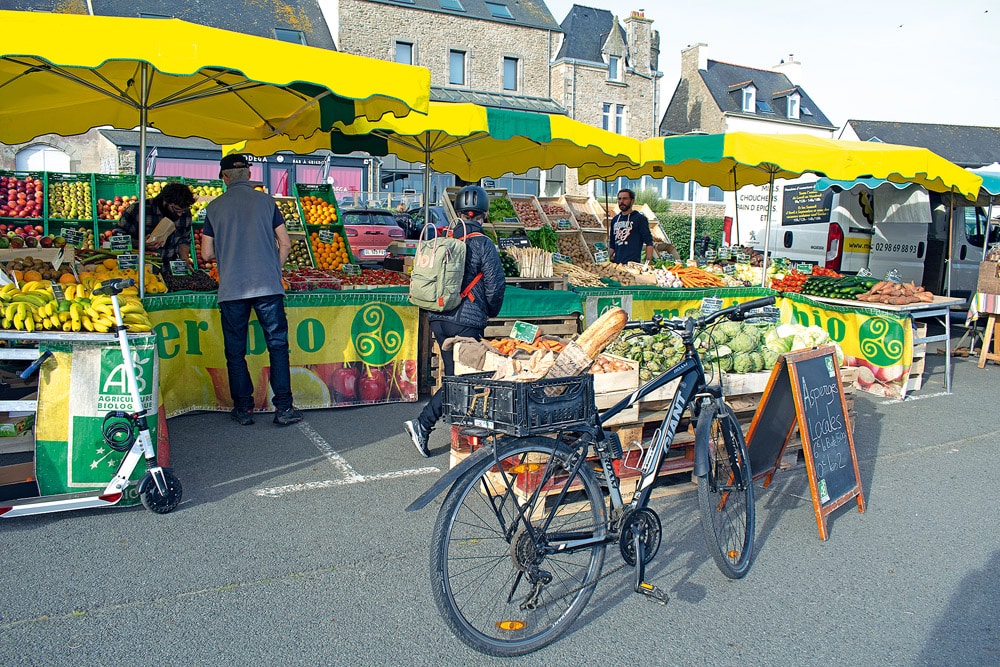
Buying breakfast at the Wednesday market on the old quay.
Facilities
- 24-hour fuel (SP95 and diesel)
- Electric/water supply on pontoons
- Black-water/bilge pump-out
- WCs and showers
- Laundrette
- Bike rental
- In summer there is a daily shuttle bus
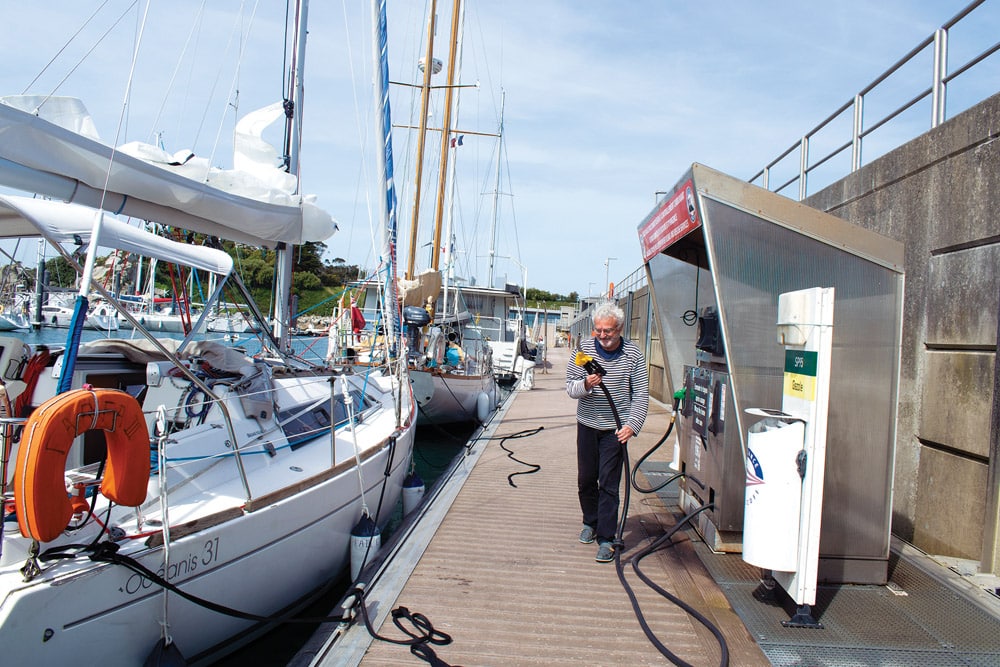
24 hours fuel.
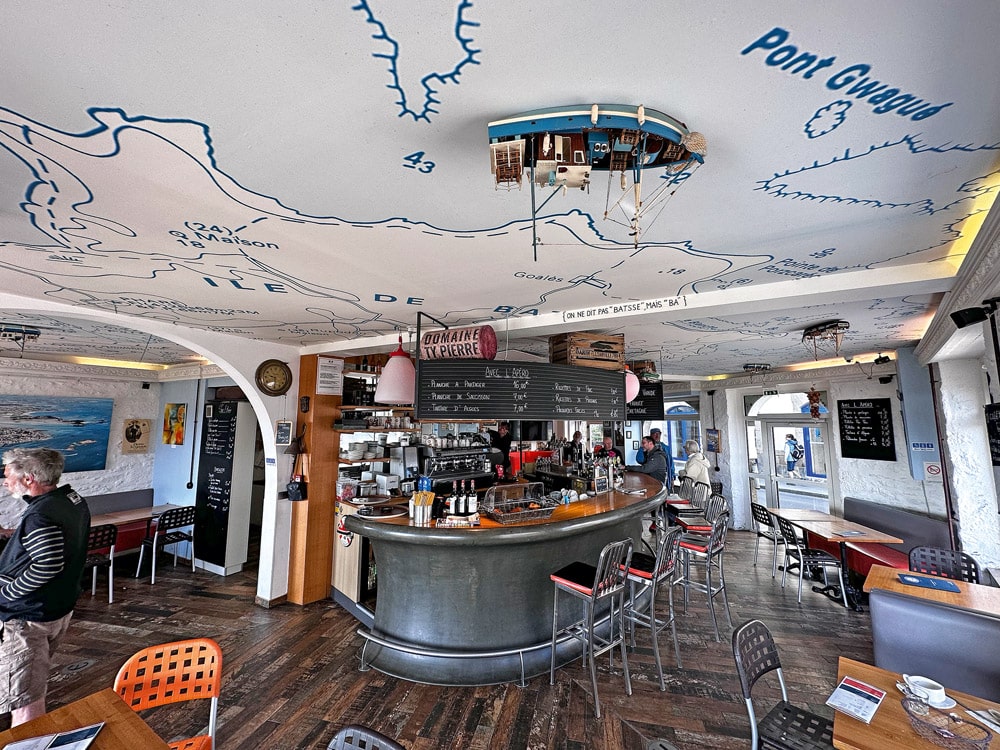
An unusual way to look at the charts!
Know your onions!
An easy 20-minute walk or a five-minute cycle ride takes you to the old port, where coastal fishermen offload their catches, and beyond that, to the characterful streets of Roscoff itself. Here, fantastical gargoyles adorn the granite houses, which were constructed by wealthy 19th-century traders and today jostle for space with boulangeries, creperies and brasseries. Restaurants spill out onto the cobbled streets, which lead to a square dominated by a majestic granite church and its iconic spire, the stonework of which was built by ship owners in the 16th century.
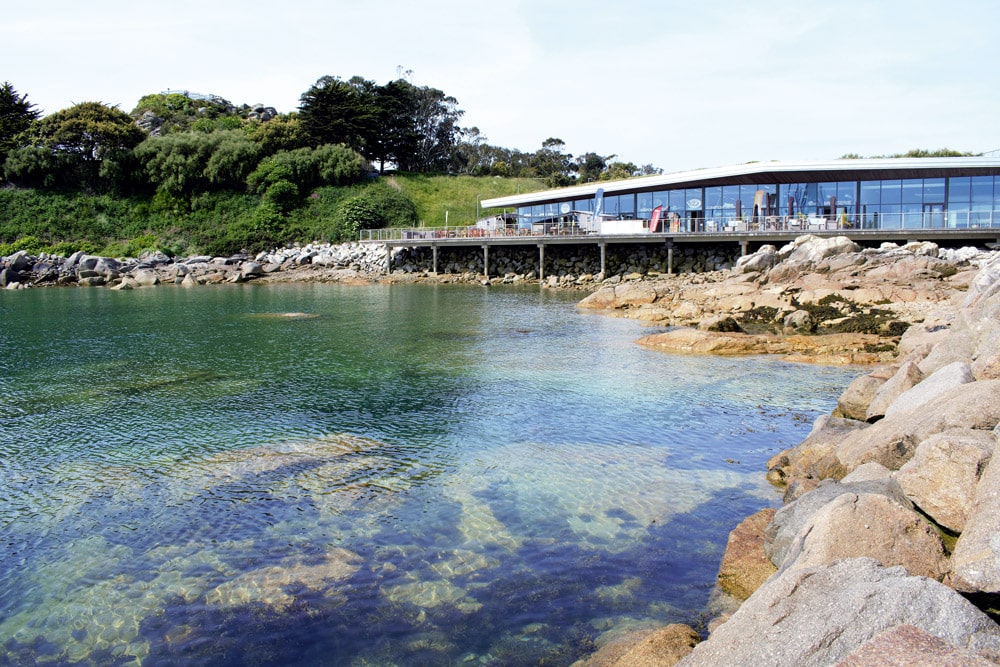
Owing to the high iodine levels in the surrounding waters and the mild climate, the first thalassotherapy centre in Europe was opened in the town in the late 19th century. There are some fabulous spas should you need to relax and recuperate after your sea crossing!
The area around Roscoff is called Léon and it has a rich seaweed-fed soil, which is perfect for growing vegetables, particularly the pink onions that are synonymous with the area. From the 1930s, ‘Onion Johnnies’ crossed the English Channel to sell strings of onions from their bicycle handlebars. The onion sellers sadly no longer ply their trade, but the town is particularly welcoming to British visitors and most restaurants have both languages thoughtfully printed on their menus.
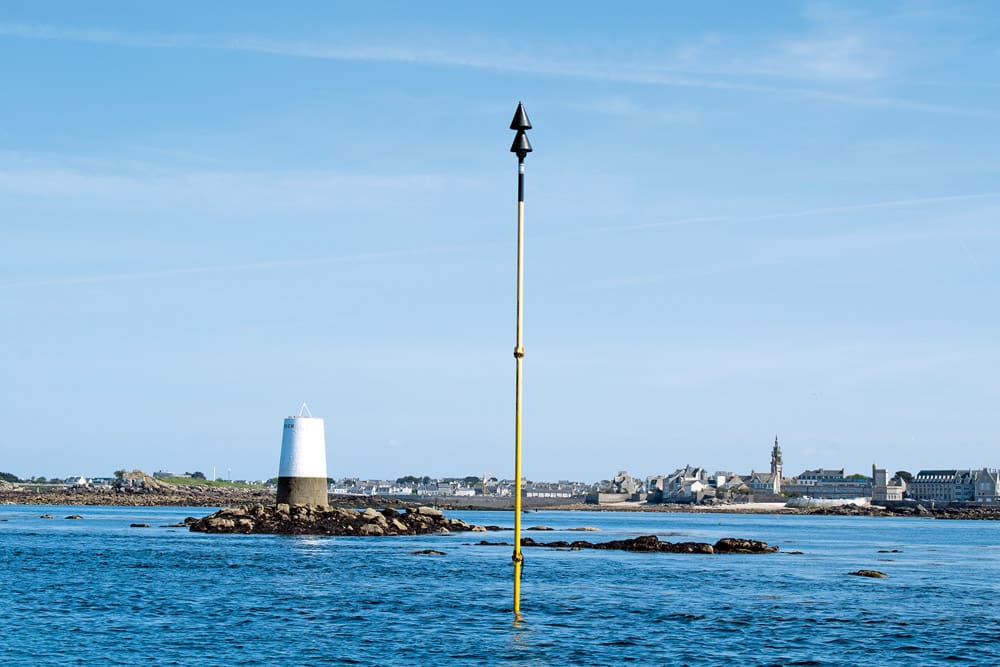
North cardinal mark.
Jo and I love exploring the area by bicycle, and the heritage trail from Roscoff to Saint-Pol-de-Léon is a firm favourite of ours – through fields of artichokes along a well-signed cycle path. Come the evening, there is a lovely atmosphere in Roscoff as families and visitors congregate to eat al fresco at pavement tables, supping the local cider ice cold from colourful pitchers. The sinking sun softens the granite buildings with a golden hue, and the morning announces its arrival over the Île de Batz ferry pier in unfiltered blazing glory.
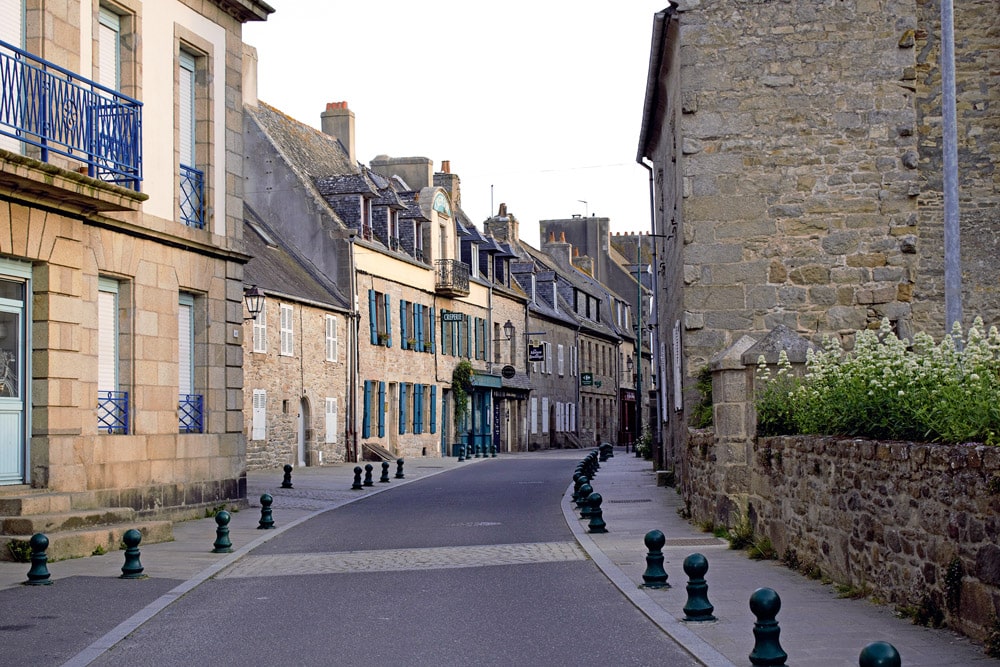
Pretty boulevards lined with granite medieval houses Inset: The region is famous for growing artichokes.
Île de Batz
We always make a beeline for this remarkable and beautiful island with its patchwork of coastal paths and crop fields leading down to white-sand beaches. There are, though, a lot of rocks and a lot of tide, so the best and easiest option is to take the ferry. It takes only 15 minutes to get to Île de Batz from Roscoff, but you could be on another continent. There are no vehicles on the island, so my top tip is to explore by bike via the many cycle paths, taking in the views along the way of such sights as the 44m-high lighthouse, the island’s church and the pretty little Breton cottages with their steeply sloped roofs. The climate is extremely mild here – flowers abound in the cottage gardens, and as you step foot onto the island, a gentle breeze carries the enchanting fragrance of jasmine through the air. There are numerous cafés and creperies dotted around the 3.5km-long island as well as an exotic garden to explore. If, like us, you sit on the beach with your toes digging into the hot white sand as the sea laps the shore, you’ll have to pinch yourself that you’re not sitting on a Caribbean island, although it has to be said, the sea temperature is a bit of a giveaway!
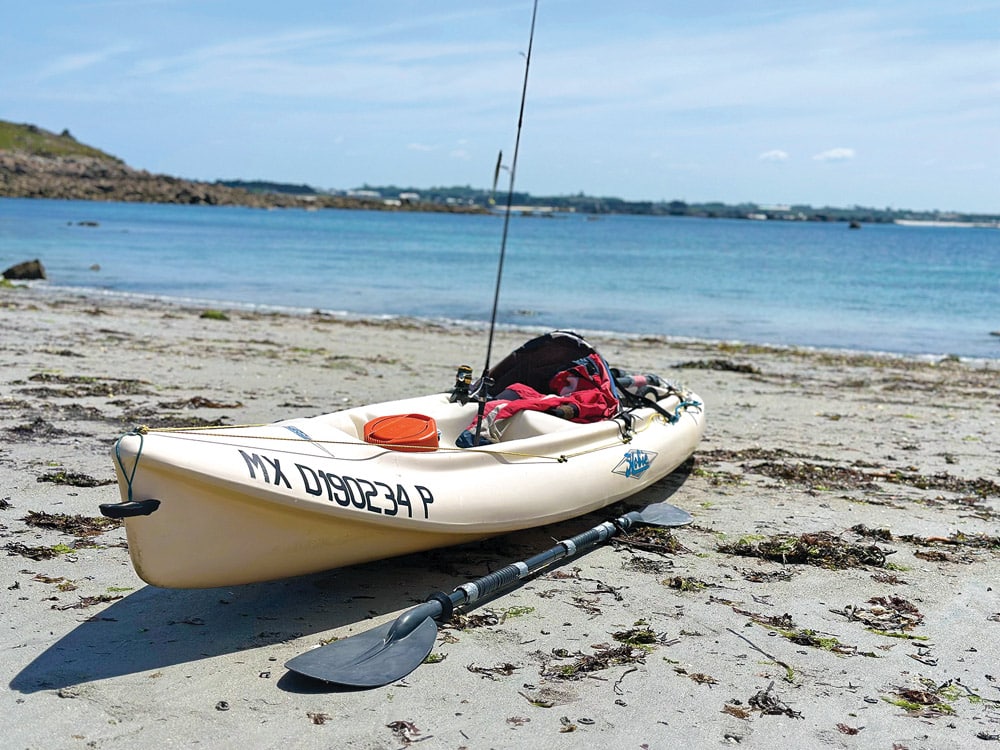
Isle de Batz beaches of soft white sand and sparkling seas
A final word
As mentioned earlier, Roscoff was my first ‘port of call’ back in the 1980s and I’ve returned time and time again ever since. Its charm, warm welcome, profusion of eateries, heritage and fauna still captivate me as much today as they did all those years ago. Put Roscoff on your list of ports of call and I’m sure you’ll be beguiled by this beautiful French port as much as we have been!
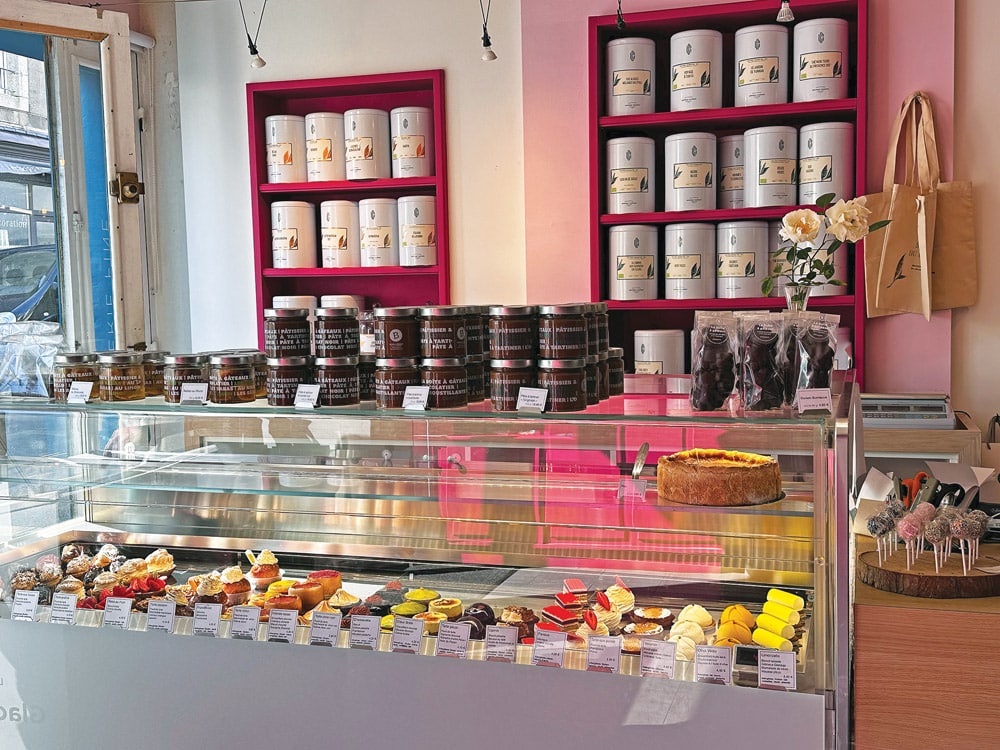
We can’t resist a stop at the Chocolatier!
Roscoff revelations!
On 13th August 1548, a young Mary Stuart landed in Roscoff on her way to the French Court where she was betrothed to be married to the Dauphin François. Just five and a half years old, the Queen of Scotland stayed for several days in Roscoff before continuing on her way.
Built in 1619 to preserve the people of Léon from the incursions of pirates and other enemies of the church, the Chapelle Sainte-Barbe with its whitewashed walls was built and stands today on a knoll looking out across the bay. The Onion Johnnies saluted the saint by hoisting their flags three times, and it now serves as a waymark for approaching mariners.
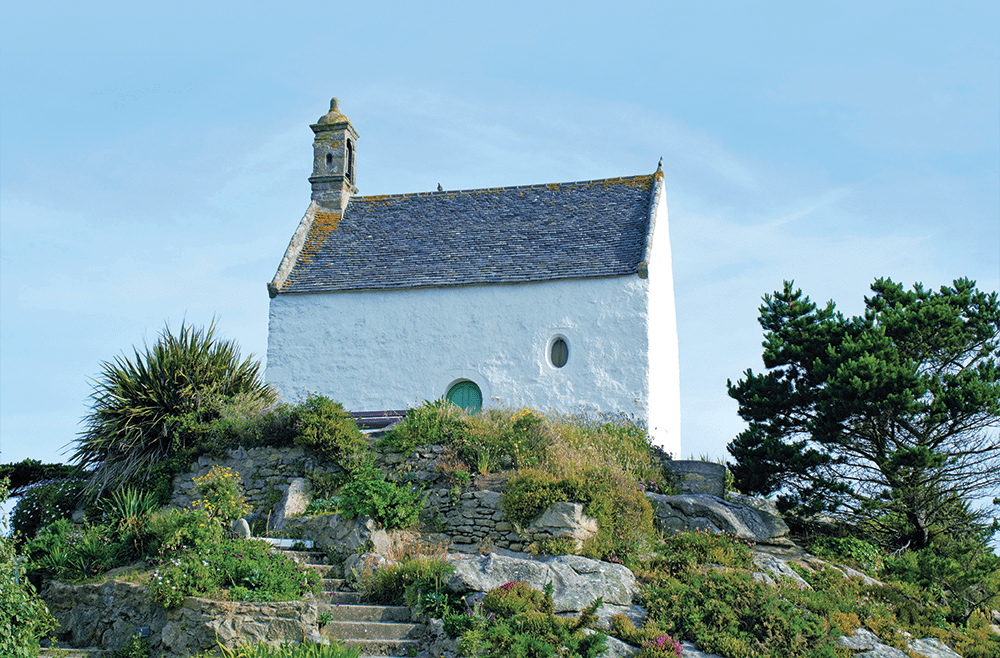
Chapelle Saint Barbe.
The Jardin Exotique de Roscoff is a botanical garden perched on top of the granite rocks with a panoramic view of Morlaix Bay. Boasting more than 3,400 exotic species and plentiful water features, it’s well worth the climb up from the marina.
Roscoff still holds its annual onion festival in August to celebrate the pink onion of the region, and there is even an onion museum dedicated to the intrepid sellers who ventured far and wide to support their families. In their heyday, in the 1920s, nearly 1,400 sellers brought an eye-watering 9,000 tons of onions to the UK!
Local pig farmer Alexis Gourvennec lobbied the French government to provide a deep-water port at Roscoff so that Breton farmers could export their cauliflowers and artichokes to the UK. A group of them purchased their own freighter, the Kerisnel, a former Israeli tank carrier, and in 1973 they started sailings between Roscoff and Plymouth. The following year the company adopted the name ‘Brittany Ferries’!
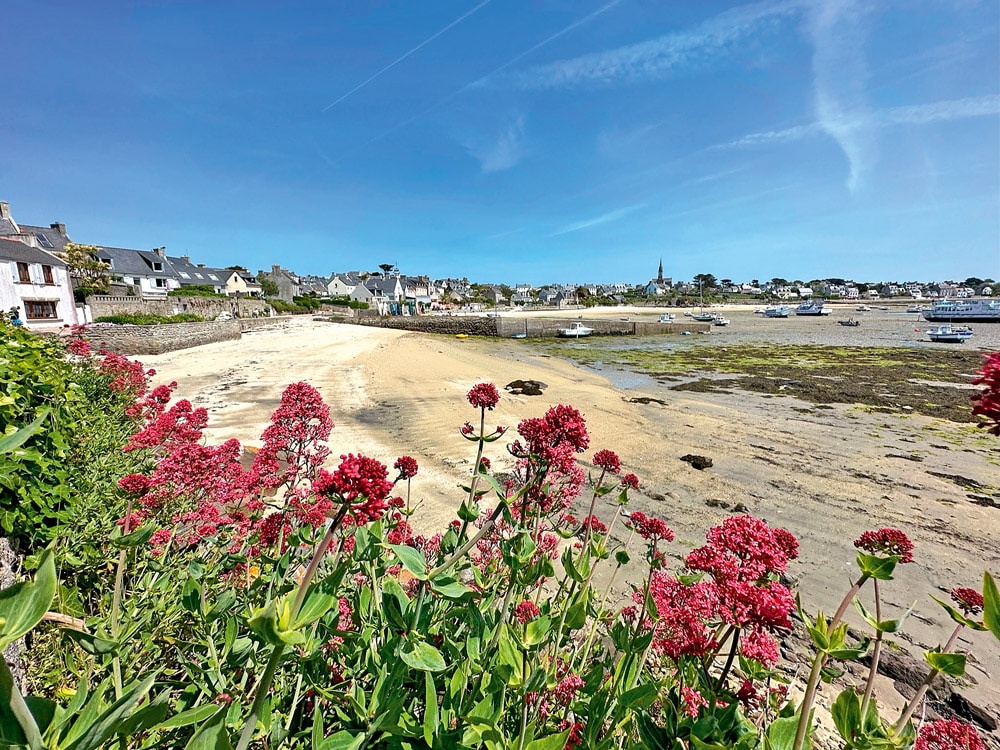
Long stretches of beaches surround the island
Port of Entry – Clearing in and out:
My advice is to complete the Customs form up to 24 hours before your arrival, but these are also available at the marina. Email the form to the marina and the Customs and you will receive an appointment from the Customs office for you and your crew to present your passport, particularly if you are arriving out of office hours or on a French holiday. Our understanding is that there are usually Customs officers available during office hours. On our last visit, we just presented ourselves armed with our passports and forms to the office located in the Brittany Ferries terminal.
It’s important to remember to clear out too, so you’ll need to return to the Customs office to have your passport stamped.
Customs email: roscoff@douane.finances.gouv.fr
Useful Info
- Marina phone number: 0033 (0)298797949
- Email: plaisance.roscoff@bretagne-ouest.cco.bzh
- VHF channel: 9

